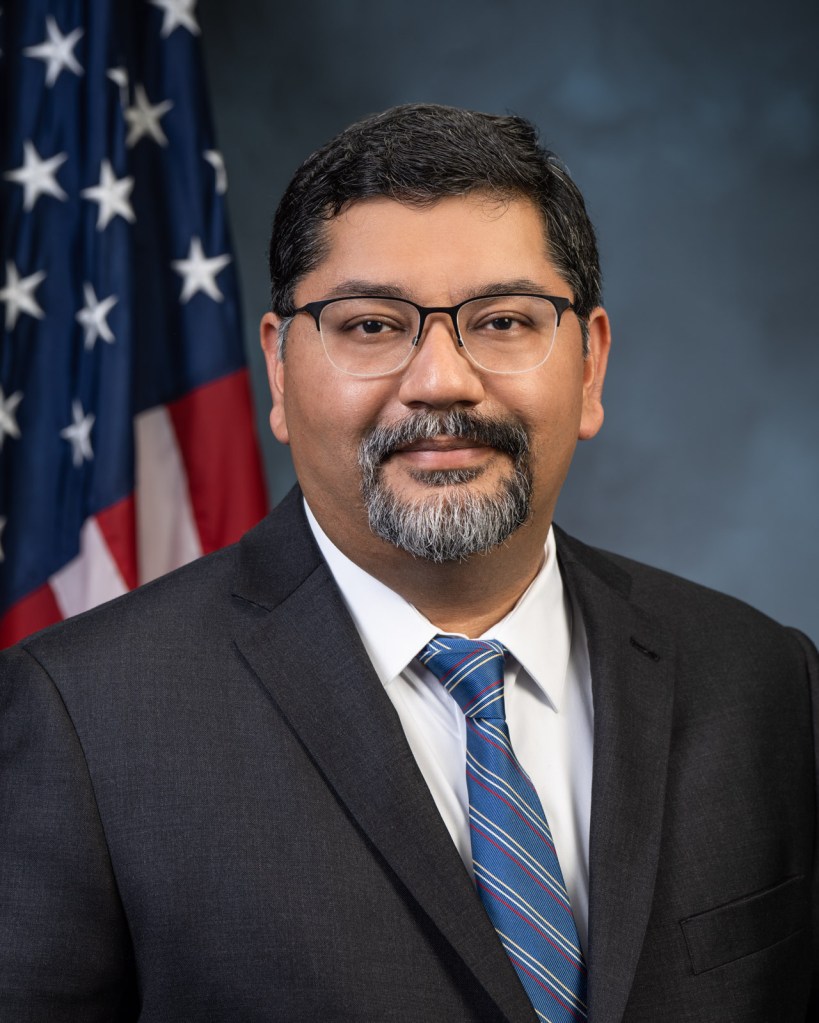
Ginnie Mae acting president Sam Valverde has been operating in his current position at the government-owned company for much of 2024. He is overseeing the sizable government portfolio of mortgage-backed securities (MBS) while navigating the company’s stated need for more budgetary resources.
But he has also stepped into his role following an effective working relationship with his predecessor and the last Senate-confirmed Ginnie Mae president, Alanna McCargo. Additionally, Valverde has had to oversee the Ginnie Mae response to issuer liquidity issues. In an exclusive interview with HousingWire, he was asked about how these matters look from his position — and what the company is aiming for to advance the dialogue around them.
Budget authority and support
When asked about what the company is seeing regarding its requested budget authority, Valverde said that it is hard to tell but that Congress and other sectors within the government have expressed support for Ginnie Mae and its mission.
“As you know, we requested $67 million for salaries and expenses for fiscal year 2025,” he said. “I’m not going to opine on the likelihood of receiving the full amount; that’s up to Congress. What I can say is that we’ve had strong support from the U.S. Department of Housing and Urban Development (HUD) and the Office of Management and Budget (OMB), and recent budget cycles have shown Congress’s support as well. The industry has also been strongly supportive of our budget requests.”

Earlier this year, organizations including the Mortgage Bankers Association (MBA) advocated for Ginnie Mae to receive the full budget authority it has requested. But the business at large is growing and becoming more complex, and the hope is that chronic underfunding — which has been a longstanding issue, Valverde said — can be avoided.
“We’ve been underfunded for years, and the recent growth in funding is helping us rightsize to meet demands, especially after we took on the Reverse Mortgage Funding (RMF) portfolio at the end of 2022,” he said. “Like others, we’ve worked hard to mitigate the impact of the rapidly rising rates across late ’22 and through ’23, and I’m extremely proud of how our staff managed under those resource constraints.”
Funding for 2024 is already having a stabilizing effect on Ginnie Mae, he explained, but additional resources will help the company to serve the mortgage industry and market more reliably. “As we take on more high-priority projects, additional resources will be essential,” he said.
Leadership differences from McCargo
Alanna McCargo resigned from her role as Ginnie Mae president earlier this year, bringing an end to the tenure of the first Senate-confirmed company president since the end of the Obama administration. Valverde shared that her leadership was one of the reasons he was excited about coming to work for Ginnie Mae.
Prior to joining the company, Valverde worked for agencies including the Federal Housing Finance Agency (FHFA) and the U.S. Department of the Treasury. He first joined Ginnie Mae in March 2022 as executive vice president and chief operating officer. He became principal EVP in 2023 before being named acting president upon McCargo’s resignation.
“Alanna and I worked very closely together and shared a common vision,” he said. “We were true partners. One of the reasons I was excited to join Ginnie Mae was knowing that under her leadership, there would be a focus on equity and that our efforts would be market- and data-driven.
“I’d say the transition has been pretty seamless for the organization. Our priorities remain very similar and there has been steady momentum across both leadership regimes.”
One of the reasons for that is that both Valverde and McCargo have placed a high value on cross-collaboration — both within Ginnie Mae itself and with its federal partners.
Liquidity risk, paths forward
But there is also broader recognition of Ginnie Mae’s expertise, he added, which has helped foster stronger connections with government partners at different levels.
“Our staff’s expertise is increasingly recognized as a resource, seen in products like the FSOC report on mortgage market risks, released in May,” he said. “In my conversations with the industry and the think-tank community, I’ve seen that the FSOC report has sparked a number of interesting discussions.”
Ginnie Mae recognizes that liquidity risks originally identified in that report remain significant, which the company has aimed to highlight for more than a decade, he said.
“But we also believe they’re surmountable,” Valverde said. “We’re committed to supporting and leading the public conversation.”
The company co-hosted a summit with HUD on Oct. 15. The event focused on mortgage market resilience and access to credit to push the conversation even further, he explained.
“Issuer liquidity remains one of the most significant challenges in housing finance, and we believe we can help create a forum that fosters solutions and maintains momentum on this issue as we continue to raise its profile,” Valverde said.





